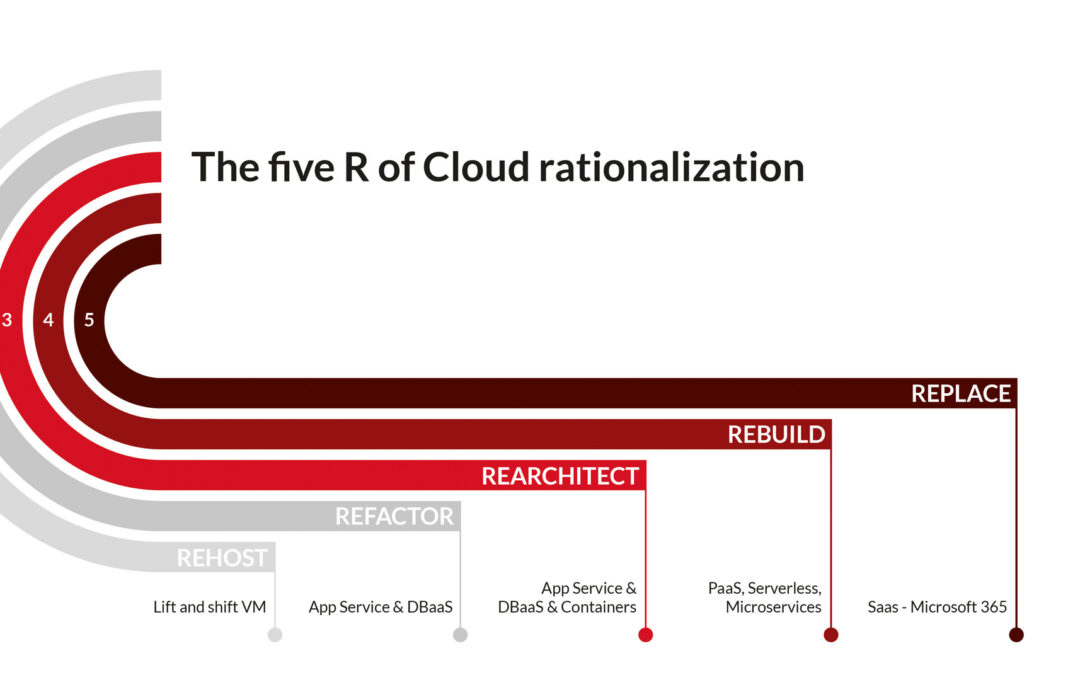And how they enable you to implement the right migration strategy to Azure.
Cloud rationalization is that evaluation process that allows each organization to determine the best way to migrate or modernize each asset to the Cloud. The five R’s of rationalization – which Microsoft suggests as a framework to be adopted by all companies considering a switch to Azure – are a great way to label a potential future status of any workload you intend to migrate to the cloud.
Let’s have a look at them in detail:
1. REHOST (VM)
Also known as “lift and shift” migration, this is the most common and quickest option: it consists of replicating servers as they are (with no or minimal changes to the overall architecture) that are simply moved to Azure IaaS instances.
2. REFACTOR (App Service & DBaaS)
This option would instead migrate applications and services to Platform as a Service (PaaS) solutions-a good choice for reducing effort and operational costs. Of course, it is necessary to adapt applications slightly to make them compatible with a PaaS model, which is why it is called “refactoring.” It is in any case a not too complex operation, thanks to the tools made available by Microsoft.
3. REARCHITECT (App Service & DBaaS & Containers)
The above, of course, does not apply to outdated applications and workloads that are no longer compatible with Azure, but also with any other type of cloud provider. In these cases, it may be necessary to “rearchitect” the application before transformation-an operation that can be done using some native Azure components, without having to completely rewrite it.
4. REBUILD (PaaS, Serverless, Microservices)
In some cases, the efforts required to migrate an application to the cloud may be too expensive. A problem that is especially true for applications that no longer meet the requirements of revamped business processes. In these cases, rather than laying hands on the old application, it pays to create a new code base, aligning with a cloud-native approach from the start.
5. REPLACE (Saas)
The last and most extreme option is to completely abandon the migration and transformation of existing applications (but also the idea of developing new ones), and rely on ready-to-use software as a service (SaaS) applications that can replace in all, if not for the better, the functionality that is required. For example, the adoption of Microsoft 365 for collaboration, communication, and document sharing.


